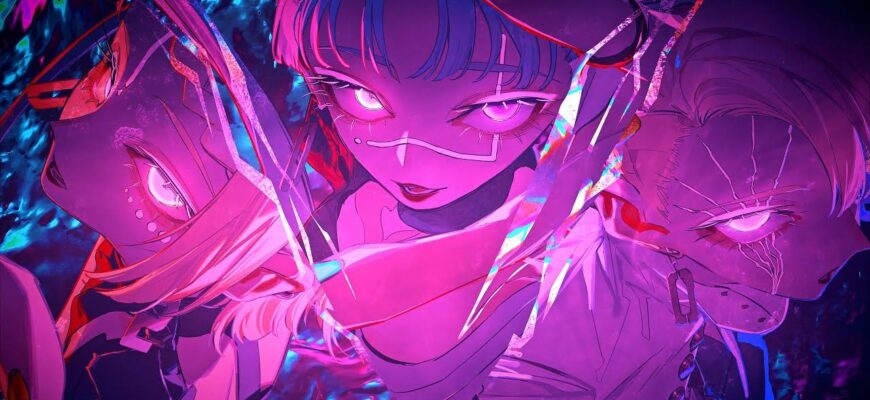In the vast, interconnected world of online streaming, where millions gather daily to share passions and engage with content creators, a disturbing undercurrent of toxicity often flows unnoticed by many, yet deeply impacts those at its receiving end. Recently, Yulia “NamiNetsu” Zharina, a prominent streamer from Paragon Studio, brought this issue into sharp focus, sharing a raw, emotional appeal regarding the consistent online harassment and bullying she endures on Twitch.
NamiNetsu`s message resonated not just as a personal lament but as a critical reflection on the current state of digital etiquette. Her experience, sadly, is not isolated, echoing the struggles of countless content creators who navigate the thin line between engaging with their community and becoming targets for unprovoked aggression.
The Perplexing Pursuit of “Reactions”
The core of NamiNetsu`s distress stemmed not from the crude insults themselves – she admitted a weary familiarity with comments targeting her makeup, appearance, gaming skill, or even baseless accusations of being a “talentless OnlyFans girl.” What truly struck her was the casual nonchalance of the perpetrators, exemplified by one viewer`s chilling response when asked why they engaged in such behavior: “I want to catch emotions. Just curious to see the reaction.”
“I wept not because of specific words, but because I became afraid. Afraid that being cruel is as easy as two fingers… and another`s suffering is merely entertainment. What has happened to us? When did we stop seeing a human behind the screen, and start seeing a toy?”
This admission unveils a peculiar form of digital entertainment where empathy takes an extended leave of absence. It highlights a disturbing trend where the human element is stripped away, reducing interaction to a perverse game of cause and effect, with the streamer`s emotional pain serving as the desired “effect.”
Debunking the “Part of the Job” Fallacy
A common, and often dismissive, retort to streamers expressing their distress is the notion that such harassment is simply “part of the job.” NamiNetsu vehemently rejected this idea, drawing a clear distinction:
“No. Part of the profession is creating content, sharing, communicating, being connected. Not enduring violence, bullying, and verbal humiliation from people who are simply bored.”
This perspective is crucial. Content creation, like any profession, involves dedication, skill, and interaction. It does not, however, come with an implicit contract to tolerate abuse. To suggest otherwise is to normalize what is inherently abnormal and unacceptable behavior. It is akin to telling a shopkeeper that being robbed is “part of selling goods.” The digital space should not be a free-for-all where basic human decency is suspended under the guise of “internet culture.”
Degradation, Not Culture
NamiNetsu rightly categorizes this behavior not as an unfortunate byproduct of internet culture, but as a symptom of degradation. The tendency for individuals to justify their toxicity by claiming it`s “the norm” or “just how the internet is” serves as a convenient shield, preventing self-reflection and accountability. As she pointed out, if such actions were to occur in a face-to-face interaction, the consequences and societal judgment would be swift and severe. The perceived anonymity and distance of the internet embolden individuals to act in ways they never would offline.
This problem extends beyond individual streamers. Former professional player Zaaz, for instance, previously voiced similar frustrations regarding disrespectful treatment towards women during online matches, underscoring that this is a widespread issue affecting various facets of the gaming and streaming community.
A Plea for Human Connection
At its heart, NamiNetsu`s message is a poignant plea for human connection and empathy in a digital age that often fosters detachment. Streamers, like any individuals, possess complex lives beyond the camera lens:
“We, streamers, are the same people as you. We also have jobs, families, friends, favorite things, hobbies, and souls. We are alive.”
The relentless barrage of negativity can have significant implications for mental well-being, pushing individuals to their emotional limits. It is a constant test of resilience, often under the misapprehension that emotional fortitude equates to good “content.”
NamiNetsu is not seeking pity, nor is she asking for blind support. Her intention is far more profound: to ignite a moment of self-awareness in every viewer, every commenter. To encourage a pause before typing, a consideration of the human being on the other side of the screen, who might be having a difficult day, who is not made of iron, and who can be genuinely hurt.
The digital world mirrors our society. If we allow cruelty to flourish online, dismissing it as harmless “banter” or “just the internet,” we risk eroding the very fabric of empathy that holds communities together. The choice, ultimately, lies with each individual keyboard warrior: to perpetuate a cycle of digital aggression or to actively contribute to a more compassionate and human online environment. Because, as NamiNetsu sagely concluded, if you are a bad person online, it`s highly probable you carry that same disposition into your offline life, merely concealed for social convenience.







